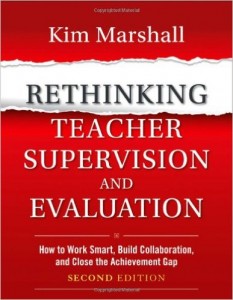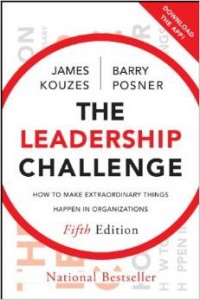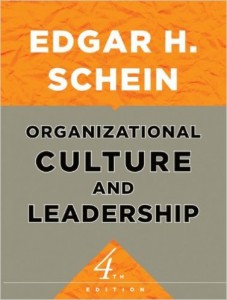Why I am Interested in This Topic
Considerable research focuses on personality, charisma, and other personal characteristics of organizational leaders. However, the focus here will be on frameworks, key mechanisms, and attributes that enable high performance and high reliability schools to focus on student outcomes- specifically preventing all student failures. Through the examination of this research, and how performance is also influenced by an organizational culture that supports high performance and high reliability, I ask that you analyze your school to determine if the key elements are either present or absent and what steps you can take to impact organizational outcomes and enhanced student achievement at your school.
Background
Jim Collins (2001) states that the foremost reason there aren’t great schools is because there are good schools, and good is the enemy of great. Why? Because it is easy to settle for good. For the most part, great organizations start great, and good organizations start good and stay good. So, what can educational leaders do to go from good to great? This sandbox and blog will explore frameworks and mindsets that can be useful to educators and administrators to build a performance culture, to ensure that student failure is not an option, and to hold individuals and groups accountable for outcomes.
Educational leaders can have significant impacts on school culture regardless of structure or organizational type. First, Schein (2010) states the best way to get a message across is through charisma. This requires that the educational leader possess the ability to capture constituents’ attention and communicate major themes and values in a lively and colorful manor. Charisma is an important characteristic of culture creation in any organization. However, many educational leaders that I have worked with don’t possess great charisma; nonetheless, they can still influence cultural change by how they react to critical events, incidents, and crises. They can do this by how they model, teach, and coach; by how they allocate rewards and status; and by what they pay attention to, measure, and control on a consistent basis. In addition, educational leaders, regardless of organization type, can impact cultural change by how they structure and design their school or classroom; by the systems, processes, and policies they put in place; by the rites and rituals of the school or classroom, and by the philosophies, beliefs, and principles they communicate. The creation and maintenance of school culture along with strategic management are the essence of educational leadership and are two sides of the same coin. More broadly, to understand school culture at any level requires that educational leaders be able to understand student and school culture at all levels: microsystems, mesosystems, exosystems, and macrosystems are all interconnected.
The school microsystem is the responsibility of the principal, and the first and foremost responsibility is to facilitate high reliability learning: principals are challenged to avoid failure entirely by ensuring that every child is either proficient or advanced. To support this endeavor, educational leaders and their staffs must create conditions that support teaching, learning, and academic outcomes. For educational leaders to accomplish the primary outcome of learning for all students, they need a rich portfolio of skills and strategies to impact student outcomes. Such strategies and skills are needed to monitor the results of actions so that unsuccessful strategies can be modified or replaced quickly. Likewise, educators must ensure that their students develop proficiency in their core subjects through a rich portfolio of strategies and approaches for each desired outcome (Bellamy, Fulmer, & Muth, 2007).
Schools can also implement adaptive high reliability organization (HRO) characteristics through teacher teams that are tasked with identifying strategies for intervening with students before they are at risk of failing. In addition, recovery from early signs of academic or behavioral problems can be improved by the intensity of the intervention or through different instructional approaches: Backup systems can be constructed to use different strategies, materials, and teachers. Most importantly, educators and leaders must create structural supports for early detection and recovery (Bellamy, Crawford, Marshall, & Coulter, 2005).
Many strategies associated with high reliability organizations are already familiar to educational leaders such as an emphasis on continuous training (professional learning communities), resilience of classroom teachers to solve unexpected problems, and the extensive use of data. In the past, a school was considered successful when most students were successful. A challenge for educational leaders attempting to create a high reliability school is that schools are traditionally dependent on the individual autonomy of teachers during the normal course of school operations. Educational leaders must be able to confront school cultures where individual teachers have singular discretion on when and how to act when problems arise such as when a student is in danger of failing. Alternatives to normal procedures will be required when problems arise, and they may need to be different from those used by non-academic HRO’s. A fail-safe schools framework may provide the high reliability that schools need. This framework focuses on improving normal operations through fewer initial errors or failures and strategies such as recruiting and training; detecting potential problems by looking at systems or policies with skepticism, riveting attention to detail, and reporting errors so that autopsies can be conducted (lessons learned); and recovering from problems by responding in ways that prevent minor problems from escalating into failures or accidents (Bellamy, Crawford, Marshall, & Coulter, 2005).
In education, the No Child Left Behind Act of 2001 (NCLB) significantly raised the stakes for schools: high reliability for adequate academic growth for all students became an important aspect of school success. Schools are now challenged to prevent essentially all failures and to eradicate achievement gaps among student groups. Most importantly, a single child’s failure to make adequate progress at expected levels constitutes a failure for the entire school. Unfortunately, many educators aren’t keen to apply ideas from other organizations to schools. However, educational leaders can benefit from analyzing the characteristics found in HRO’s such as having a preoccupation with student failures; having a reluctance to simplify complex, unknowable, and unpredictable situations; having a sensitivity to operations such as being attentive to classroom teaching—where the real work gets done; and having a commitment to resilience by developing capabilities to detect, contain, and rebound from inevitable errors. HRO’s are not error free; however, their errors do not disable them (Bellamy, Crawford, Marshall, & Coulter, 2005). When errors do occur, educational leaders can perform a lessons learned analysis. Significantly, Jim Collins (2001) emphasizes that it is important to conduct lessons learned and autopsies without blame: This follows the concept that as a leader you can delegate responsibility, but you can’t delegate accountability. Cannon and Edmondson (2005) stress the concept of failing to learn, and learning to fail intelligently. Learning to fail intelligently requires identifying and analyzing failures with deliberate experimentation to improve outcomes.
Unfortunately, too many educators are rated on their personal likability and how well their group gets along. Oftentimes, as long as the majority of students do well, the school is considered successful. Frankel, Leonard, and Denham (2003) defines accountability as an understanding that they are to perform an action, a clear understanding of what the action is, and the method by which they will be assessed. Most importantly, a school culture should help construct the framework for consistent accountability for student failures where they may be poorly defined. Furthermore, a healthy school culture is one that doesn’t ignore information and improves by performing lessons learned, without blame, and examines its own weaknesses. To support this effort, leaders and teachers must be able to speak safely regarding their own actions or those in the school around them. To operate with high performance and reliability, educators must be able to admit weaknesses, concerns, or inabilities, and seek assistance when and where needed.
Peters and Waterman (2006) present eight attributes that are common in excellent organizations. These attributes are based on McKinsey’s 7-S framework of structure, systems, style, staff, skills, strategy, and shared values. They suggest that excellent schools would have a bias for action, they would be close to the student, they thrive on autonomy and entrepreneurship, they achieve productivity through people, they are hands on, they are value driven, they focus on what they do best, and they have a balance between centralized and decentralized.
In summary, can you become an extraordinary leader/educator and produce extraordinary results? Absolutely! They just need to focus in a disciplined and sustained way. It is incumbent upon educators to look at transferable business strategies and concepts that can turn educational organizations into high performing and highly reliable organizations. Educational leaders are challenged to avoid failure entirely by ensuring that every child is either proficient or advanced. To support this endeavor, educational leaders and their staffs must create conditions that support teaching, learning, and academic outcomes. For educational leaders to accomplish the primary outcome of learning for all students, they need a rich portfolio of skills and strategies to impact student outcomes. In addition, leaders, regardless of organization type, can impact cultural change by how they structure and design the organization; by the systems, by the processes, by the policies they put in place; by the things they stop doing; by the rites and rituals of the organization; and by the philosophies, beliefs, and principles they communicate.
Self-directed Learning
- Interesting Reading
Change is Good—But First, Know What Should Never Change by Jim Collins
High Reliability Organizations in Education. Noteworthy Perspectives
- Books
Here are some print resources I recommend
Rethinking Teacher Supervision and Evaluation: How to Work Smart, Build Collaboration, and Close the Achievement Gap by Kim Marshall
Good to Great: Why Some Companies Make the Leap…And Others Don’t by Jim Collins
Great by Choice: Uncertainty, Chaos, and Luck–Why Some Thrive Despite Them All by Jim Collins and Morten T. Hansen
The Leadership Challenge: How to Make Extraordinary Things Happen in Organizations by James M. Kouzes and Barry Z. Posner
The Wounded Leader: How Real Leadership Emerges in Times of Crisis by Richard H. Ackerman
Organizational Culture and Leadership by Edgar H. Schein
- Videos
First Who, Then What (click text)
Reflections
What do you see as the applications and strengths of being a high performance and high reliability school?
Where do you need to see growth based on the discussions in this sandbox?
What small step or idea might you start with tomorrow and incorporate in your school?
What would be your one sentence summary after watching the video(s)?
What one word describes how you feel about what you have learned here?
References
Bellamy, G. T., Crawford, L., Marshall, L. H., & Coulter, G. A. (2005). The fail-safe schools challenge: leadership possibilities from high reliability organizations. Educational Administration Quarterly, 41(3), 383-412. doi:10.1177/0013161X04269862
Bellamy, G. T., Fulmer, C., & Muth, R. (2007, Fall). Five ideas for reframing the principalship. Educational Leadership and Administration, 19, 57-74.
Cannon, M. D., & Edmondson, A. C. (2005). Failing to learn and learning to fail intelligently. Long Range Planning, 299-319.
Collins, J. (2001). Good to great. New York: Harper Business.
Frankel, A. S., Leonard, M. W., & Denham, C. R. (2003, August). Fair and just culture, team behavior, and leadership engagement: The tools to achieve high reliability. Health Research and Educational Trust, 41(4), 1690-1709. doi:10.1111/j.1475-6773.2006.00572.x
Peters, T. J., & Waterman, R. H. (2006). In search of excellence: Lessons from America’s best-run companies. New York: Harper Collins.
Schein, E. H. (2010). Organizational culture and leadership. San Francisco: Jossey-Bass.





